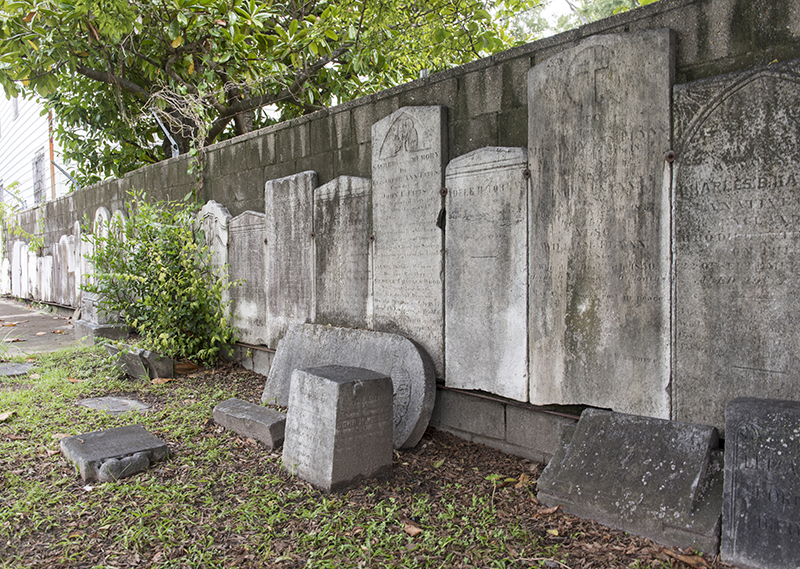DaCosta Cemetery
A Sephardic cemetery.
Note that this point is off the historical map, as cemeteries were typically placed at removed locations. Charleston grew to encompass this early cemetery over the next century.
In 1786, the local press noted that “the Portuguese Congregation Beth Elohim Unveh-Sholom proceeded to their burial ground in Hampstead in order to lay the Foundation Stones of the wall.” A schism between SephardicJews of Spanish and Portuguese extraction, distinguished from the Ashkenazim by their religious rituals, customs, foods, and pronunciation of Hebrew. and AshkenazicJews from Central and Eastern Europe, distinguished from the Sephardim by their religious rituals, customs, foods, and pronunciation of Hebrew. factions in Kahal Kadosh Beth Elohim had precipitated the founding of the Sephardic, or Spanish/Portuguese, congregation, and with it, a separate burial ground. When the split was healed, circa 1790, this separate cemetery, far away from the synagogue as mandated in Jewish law and beyond the city limits in a neighborhood called Hampstead, was no longer needed for the congregation. It became the private burial ground of the DaCosta family. (Ironically Isaac DaCosta had been the one to give KKBE the larger Coming Street Cemetery, originally intended as his family’s burial ground.) The DaCosta Cemetery functioned as a burial ground for “Portuguese Jews” until about 1847, when ownership passed to KKBE. Seemingly relegated to the burial of the poor and Jews who were not members of KKBE, it became neglected; stones disappeared and in 1939 it was lost for an unpaid paving assessment—a fate shared by a private cemetery a bit further north on Hanover Street. Some stones were later moved to KKBE’s cemetery on Huguenin Avenue.
For more information see The old Jewish cemeteries at Charleston, S.C. by Barnett A. Elzas.
